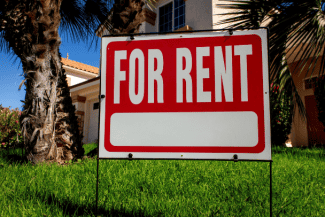“Dallas is a powerhouse”: Multifamily experts on Texas’ hottest markets
 The thing about Texas is people want to live here. Proof is in the numbers. For the past several years, the state has been at or near the top of U-Haul’s annual migration report, a breakdown of the states on the receiving end of the most one-way moves. When they get here, those folks have to find a place to call home, a certainty that has helped the multifamily industry flourish.
The thing about Texas is people want to live here. Proof is in the numbers. For the past several years, the state has been at or near the top of U-Haul’s annual migration report, a breakdown of the states on the receiving end of the most one-way moves. When they get here, those folks have to find a place to call home, a certainty that has helped the multifamily industry flourish.
“Texas is a right-to-work state. It has a lower cost of living compared to states such as California or New York. There’s no state income tax. Someone can have a very high quality of life here at a bargain compared to some other markets,” said Jon Krebbs, managing partner of The Multifamily Group, a commercial real estate brokerage firm based in Dallas. “As long as there are jobs being created, you’re going to see a lot of activity from apartment developers and a lot of demand from apartment buyers.”
That demand pushed sales volume for The Multifamily Group to record levels in 2019, the firm’s highest-grossing year ever. Things were looking up in early 2020 as well.
“The uncertainty that hit in March killed several of our deals that were either under contract or under letters of intent,” Krebbs said. “Everybody hit the brakes for a couple months.”
Mark Allen, executive managing director, Greystone Investment Sales Group, attributes that pause to investor concern about rent collection.
“After rent collections were proven stable, the challenge shifted to buyers finding deals as the demand far outpaced the supply on the market,” Allen said.
While sales slowed, they never stopped completely. The new environment created a number of obstacles, but firms like Greystone, The Multifamily Group and Avid Realty Partners pressed forward.
“On the operational side, we’ve seen fewer tenants leaving, fewer tenants moving in and less turnover,” said Craig Berger, Avid Realty Partners’ founder and CEO. “We also observed that, due to financial hardships, folks moved back in with family or brought roommates, so the number of people renting consolidated a bit.”
The response by many properties, he said, was to offer concessions—such as reduced rent or a rent-free month—to drive occupancy and stay full. Meantime, multifamily pricing went up due to lower interest rates ramping up purchase power.
“You’re discounting cash flows at a lower interest rate, so that makes asset prices go up,” Berger said.
“We were doing virtual tours while trying to educate our owners about prospects. Buyers still had to go in every unit, and we had to make sure everyone was outfitted with personal protective equipment when they did. It was a logistical challenge to get the due diligence done,” said Krebbs, who added that his firm would consider 2020 a successful year based on its completed transactions in Texas, Oklahoma and Arkansas.
“Like all multifamily brokerages, we had to get as creative as possible to help buyers and sellers close out transactions during the stay-in-place orders,” Allen said. “Multifamily owners had to adapt from an operational perspective. Whether they were communicating with residents differently, altering their marketing strategy to fill vacancies or shifting their maintenance work order operating procedures, 2020 wasn’t without its challenges.”
Challenges or not, Greystone made the best of the situation. Allen said his team’s sales volume and number of transactions increased from 2019.
“I’d likely attribute that to continuing to work hard through stay-in-place orders and continued maturity of our team,” he said.
The lessons learned in 2021 are now being carried into 2021 as the market gets closer to normal.
“Folks are sort of getting off the sidelines and buying and selling again, which is great,” said Berger.
Though Texas as a whole is a promising market for multifamily investors, two cities stand out as offering exceptional opportunities.
“In Dallas, we had an influx of new and existing residents from states with much more government control and restrictions, and less affordability,” Allen said. “Texas is a very business-friendly state relative to many others across the country; you can get twice the size of house in Texas for a fraction of the cost, and pay no state income taxes. Also, we have a very diverse economy and very low unemployment metrics relative to other Texas and U.S. cities.”
“Dallas is a Fortune 500 and Fortune 5,000 powerhouse,” said Berger. “Because so many companies and people are moving to cities like Dallas or Austin, those are the places where I want to invest my money. I know there will be future growth.”
Prices certainly reflect the increased interest in those in-demand markets, but Krebbs and the Multifamily Group have their eye on the San Antonio area.
“In Houston, Austin or DFW, you’re looking at $90,000 to $100,000 a unit for a Class-C property,” he said. “But in San Antonio, the rents just aren’t as high, so you can still get a property for about $65,000 a unit.”
Krebbs notes that, like other Texas cities, San Antonio is a steadily growing market, drafting off the winds of Austin and its location in the middle of the state.
“At The Multifamily Group, we don’t see any headwinds to multifamily investing in Texas,” he said. “There’s just too much job growth.”
That’s just one of the fundamentals that remains strong, setting up 2021 as an incredible time to buy multifamily in DFW. Allen also points to the spread between treasuries and cap rates being the widest since the “Great Recession.”
“Investors sitting on the sidelines the last three to four years because prices are too high have missed out on an incredible opportunity of growth,” he said. “There was $4 trillion on the sidelines last year, so there’s plenty of pent-up demand still. With the discussions on further fiscal and monetary stimulus, a declining U.S. dollar, and inflation in the short term, I only see the market going one way in 2021 … up!”
The issue of inflation is an important one that helps distinguish multifamily from other CRE investments.
“In multifamily, you can keep pace with inflation. If the market is hot, it’s a free market. Your leases are typically a year, so you can go out and rent apartments at market rates that could be well in excess of 1.5 percent to 2 percent growth that you’re seeing in net lease properties,” Berger said. “So as inflation heats up, multifamily apartments tend to be a tremendous hedge against that inflation.”
Everything is bigger in Texas, including the opportunity for multifamily investment as more and more people make the move to call the Lone Star State home.
Source: rejournals.com















 Accessibility
Accessibility